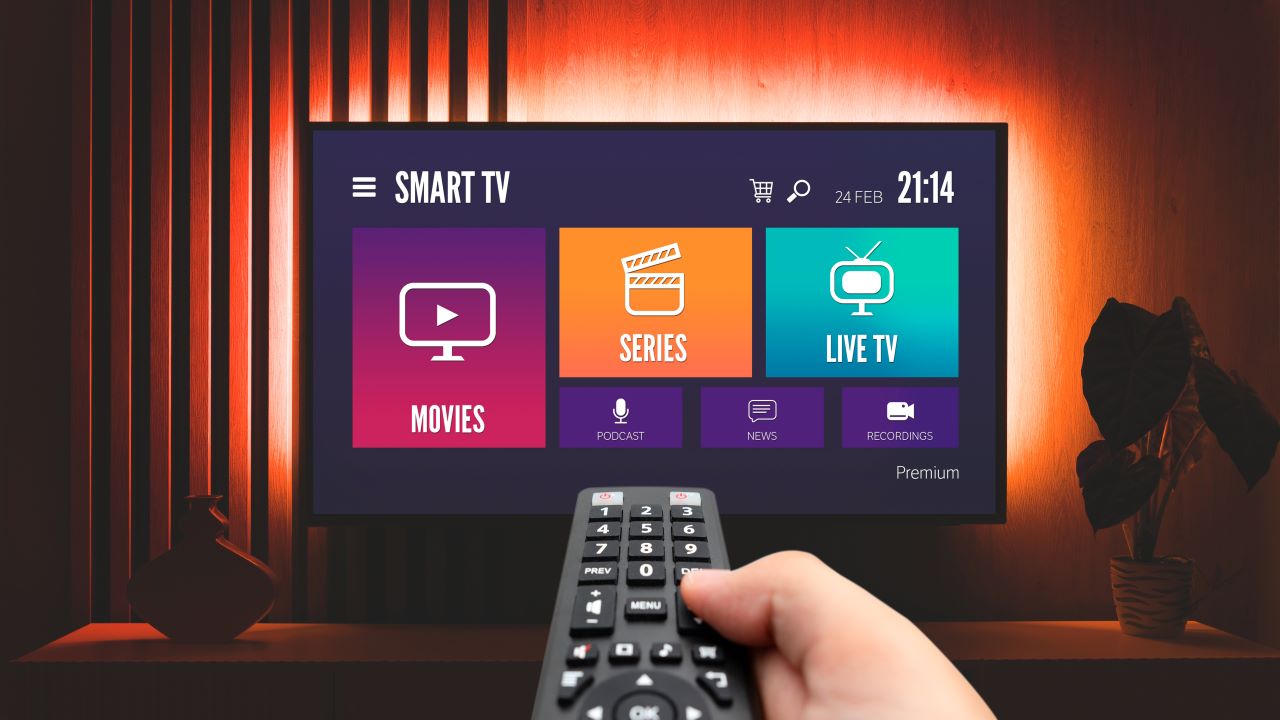NO CORD? NO PROBLEM FOR LIVE TV
American consumers watch in various ways, but 85% of them say that they watch at least some live TV content. And for 57% of them, it accounts for at least half of their viewing time. The viewing is split pretty equally between cable/satellite providers (36%) and subscription streaming services (33%). Behind them are YouTube with 19% and MVPDs at 16%. (Your math is right—it totals more than 100% because there’s some overlap.) Use of FAST services varies between age breakouts, with 53% of 18-34-year-olds and 47% of 35-49-year-olds using them, versus just 29% of people aged 50+ (Radio + Television Business Report: July 2, 2025)
SMART TVS: DOUBLE YOUR PLEASURE, DOUBLE YOUR FUN
On average, each home in the US has two smart TVs—a big milestone, especially for LG and Samsung, the brands that constitute a majority of the televisions. This comes from a recent Hub Entertainment Research study, which also showed that TVs are more than just TVs. More than one-third of those surveyed say they keep their TV on even when not sitting in front of it. They use it for non-TV functions like streaming music and doorbell monitoring. As consumers use the devices, a common issue has come to light: they want more consistency across the brands’ operating systems and an easier way to find content to watch. (TV Tech: July 1, 2025)
CONSUMERS: WE WANT BUNDLES THAT INCLUDE MORE THAN STREAMING
As smart TV penetration continues to grow and becomes the norm, consumers want to use them for more than just TV and music streaming or keeping an eye on their front door. They want subscription bundles to include things like fitness apps and smart home functionality that goes beyond doorbell-watching. This is according to Horowitz’s annual report, State of Media, Entertainment & Tech: Subscriptions. It shows that households with children want these deep bundles most of all, with 76% showing interest. Also high on the wish list is consolidating everything into one bill and having a centralized place to manage all the subscriptions. (Advanced Television: July 9, 2025)
BACK-TO-SCHOOL SHOPPING STARTS EARLY
We’re not even halfway through July yet, so why are we even talking about this? Tariffs. Parents are eager to get a jump on back-to-school shopping before prices increase, and more than half are already shopping. Eager to meet the need (and avoid tariffs themselves), retailers have already devoted space to school supplies and are promoting them online. In the end, the National Retail Federation predicts that this year’s spending will be close to 2024, with spending only projected to dip $15 per person for elementary through high school and stay flat to last year for college. Overall spending is projected to drop a bit, from 2024’s all-time high of $41.5 billion down to $38.8 billion—still the second-highest figure on record. (NRF: July, 2025)
THIS WEEK IN VIDEO HISTORY
July 12, 1976 – Family Feud debuts The game show, hosted by Richard Dawson, first aired as part of ABC’s daytime lineup, and was popular enough to launch syndicated evening episodes in 1977. That lasted until 1985, when both versions were cancelled. The show returned in 1988 with Ray Combs as host and stayed on until 1995 (Dawson came back to host the last season). The 1999 reboot featured a revolving door of hosts, leading up to Steve Harvey. His tenure began in 2010 and continues to this day.
Check out the show’s 1975 pilot here.



